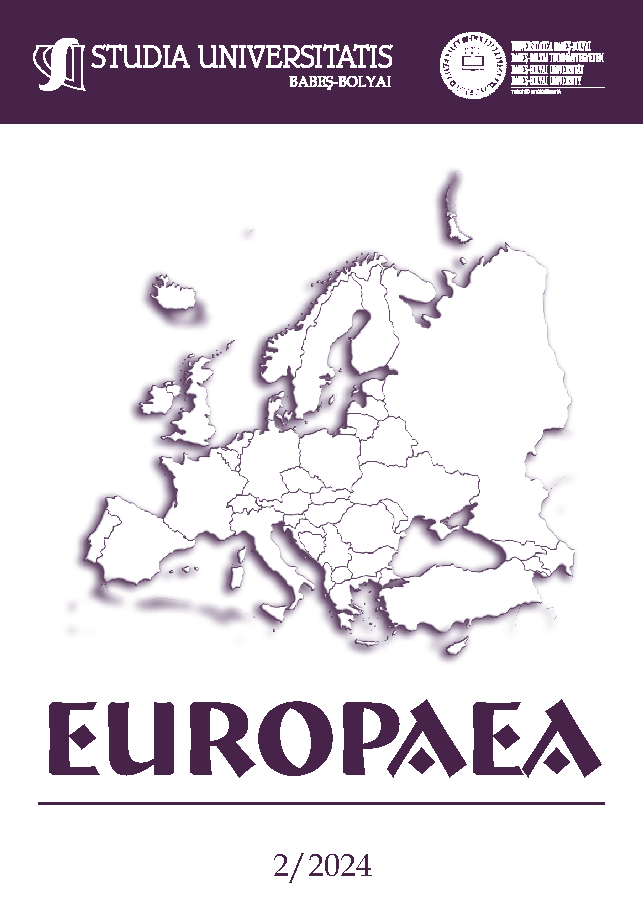LA SAPOLOGIE : DU CHOC DES CIVILISATIONS A L’IDENTITE SOCIALE DE LA POPULATION CONGOLAISE
DOI:
https://doi.org/10.24193/subbeuropaea.2024.2.09Keywords:
Democratic Republic of Congo, sapology, social identity, dandysmAbstract
Sapology: From the Clash of Civilizations to the Social Identity of the Congolese Population. Known as the art of dressing elegantly and extravagantly, sapology has become a social identity of the Congolese community. Yet, most of the population in the Democratic Republic of Congo (DR Congo) lives below the poverty line, with less than one US dollar a day. Given this controversial reality, the fundamental questions that this article attempts to answer are namely: - how have exogenous factors significantly contributed to the emergence and evolution of sapology to the point of becoming a culture and social identity of the Congolese community? - And how has sapology impacted the culture and the socio-economic situation of the Congolese community? Several studies in the literature focus on endogenous factors that construct a social identity. However, a few of them analyze how exogenous factors can contribute to constructing a culture and social identity. Using Samuel Huntington’s “clash of civilization” theory, the article demonstrates how exogenous factors have significantly contributed to the emergence of sapology to point of becoming a social identity and a modus vivendi (way of life) of the Congolese community.
References
1. Belandier, George (1995), Sociologie des Brazzavilles noires : Dynamique Sociale en Afrique Centrale, Paris : Presses Universitaires de France.
2. Bozeman, Adda (1975), “Civilizations under stress: Reflections on Cultural Borrowing and Survival”, in The Virginia Quarterly Review, vol. 51 (1), 1-18.
3. Braudel, Fernand (2008), Grammaire des Civilisations, Paris : Champs Flammarion, 2eme Édition, 1ere Édition en 1963
4. D'Aurevilly, Barbeey et Baudelaire, Charles, cités par Tacium, David (1998), Le Dandysme et la crise de l'identité masculine à la fin du XIXe siècle : Huysmans , Pater, Dossi, Thèse en littérature comparée, Faculté des Arts et Sciences, Université de Montréal.
5. Dowd, James; Dowd, Laura A. (2003), The centre holds: From subcultures to social worlds, in Teaching Sociology, Vol 31(1), 20-37.
6. Ferguson, James (2002) “Of mimicry and membership: Africans and the new world society”, in Cultural Anthropology, Vol 17(4), 551-569.
7. Friedman, Jonathan (1994), The political economy of elegance: An African cult of beauty, Consumption and Identity, New Jersey: Harwood Academic Publishers.
8. Gandoulou, Justin-Daniel (1986), Entre Bacongo et Paris : Centre de création industrielle, Paris: Centre Georges Pompidou, 1992.
9. Gecas, Viktor (1982), “The Self-Concept”, in Annual Review of Sociology, Vol 8, 1-33.
10. Rosenberg, Morris (1976), “Beyond Self-Esteem: The Neglected Issues in Self-concept Research”, paper presented at the annual meetings of the ASA.
11. Glissant, Edouard (2006), “ L’Afrique, les Afriques”, in Presence Africaine, Vol 2 (174), 32-35.
12. Gondola, Christopher Didier (1999), “Dream and drama: The search for elegance among Congolese youth”, in African Studies Review, Vol 42(1), 23-48.
13. Gondola, Christopher Didier (2011), Sapeurs, New York: Encyclopedia of Clothing and Fashion.
14. Grall, Vanessa (2011), Who is the dandy man? The Congo subculture uncovered, [https://www.messynessychic.com/2011/04/05/who-is-the-dandy-man/], Janvier 7 2024.
15. Huntington Philip, Samuel (1996), The Clash of Civilizations and the Remaking of World Order, Paris : Odile Jacob (pour la traduction française en novembre 1997).
16. Jorgensen, Kaja Erika (2014), Sapologie: Performing postcolonial identity in the Democratic Republic of Congo, (Unpublished master thesis), OCAD University, Toronto, Canada.
17. Kutesko, Elizabeth (2013), ” Problems and tensions in the representation of the sapeurs, as demonstrated in the work of two twenty-first century Italian photographers.” in Immediations, Vol 3 (02), 60-76.
18. Phyllis, Martin (1994), ” Contesting clothes in colonial Brazzaville”, in Journal of African History, Vol 35, 401-426.
19. Perin, Francois (1961), ” La crise congolaise et les institutions politiques africaines ”, in Civilisations, Vol. 11, No. 3, Bruxelles : Institut de Sociologie de l'Université de Bruxelles, 281-295.
20. Rosenberg, Morris; Schooler, Carmi; Schoenbach, Carrie; Rosenberg, Florence (1995), “Global Self-Esteem and Specific Self-Esteem” In American Sociological Review, Vol 60, 141–56.
21. Tajfel, Henry; Turner, John (1979), “An integrative theory of intergroup conflict”, in Worchel, Stephan; Austin, William (Eds), The social psychology of intergroup relations, Michigan: Brooks Cole Publisher, 33-48.
22. Tajfel, Henry; Turner, John C. (1986), The social identity theory of intergroup behavior, in Worchel, Stephan; William, Austin (2nd Eds), Psychology of intergroup relations, Chicago: Nelson-Hall, 7-24.
23. White, Bob W. (2006), "L’incroyable Machine d’Authenticité L’animation politique et l’usage public de la culture dans le Zaïre de Mobutu", in Anthropologie et Sociétés, Vol. 30 (2), 43-63.
Downloads
Published
How to Cite
Issue
Section
License
Copyright (c) 2024 Studia Universitatis Babeș-Bolyai Studia Europaea

This work is licensed under a Creative Commons Attribution-NonCommercial-NoDerivatives 4.0 International License.



